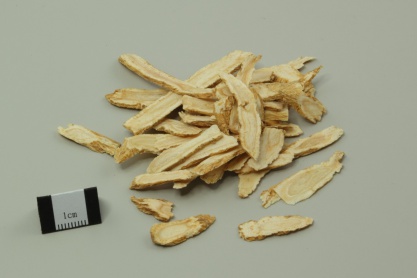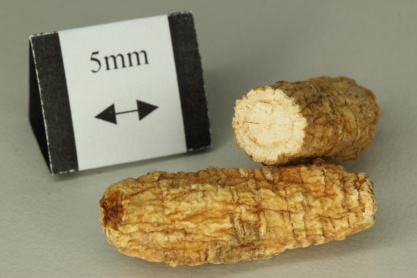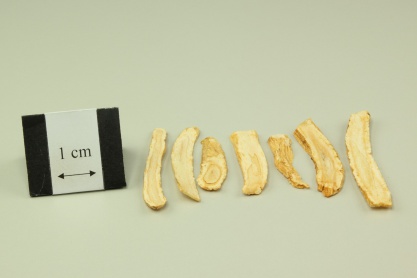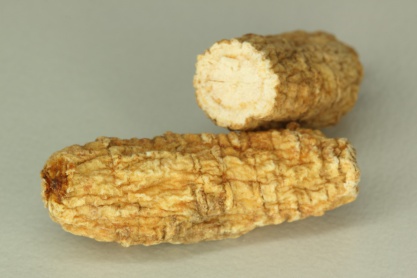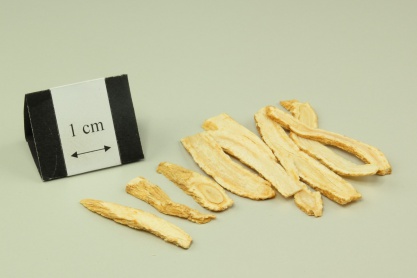西洋參
- ENG
- American Ginseng
- LATIN
- Panacis Quinquefolii Radix
| Medicinal Group | Qi-tonifying medicinal |
|---|---|
| Source | Dried root of Panax quinquefolium L. (Fam. Aralianceae) |
| Nature and Flavors | slightly bitter, sweet; cool |
| Meridian Affinity | Heart, Lung, Kidney |
| Actions | To tonify qi and nourish yin, remove heat and engender fluids |
Family
Araliaceae
Part used
Root and Rhizome
Indications
Used for deficiency of qi and yin, internal-heat, cough and asthma, bloody phlegm, fire in the deficiency syndrome, dysphoria and tiredness, diabetes, dry and thirsty mouth and throat
Research Findings
- A cup of American ginseng infusion could protect cellular DNA from oxidative stress at least within 2 h. [1]
- American ginseng has been shown to be effective in improving glycemic control in type 2 diabetes through increasing post-prandial insulin levels and decreasing postprandial glycemic response.[2]
- P. quinquefolius (a ginsenoside-rich extract of American ginseng) can acutely benefit working memory and extend the age range of this effect to middle-aged individuals.[3]
- Robust working memory enhancement may be identified following administration of American ginseng.[4]
- North American ginseng exerts a neutral acute effect on blood pressure in hypertensive individuals.[5]
- Addition of American ginseng extract to conventional therapy in diabetes with concomitant hypertension improved arterial stiffness and attenuated systolic blood pressure. [6]
Cautions
Incompatible with Rhizoma et Radix Veratri
Report on adverse effect
Allergic reactions, arrhythmia aggravated, female endocrine disorders, reduce the effect of nerve block, spleen asthenia syndrome [7]
Insomnia, headache, chest discomfort, and diarrhea; diabetes mellitus [8]
Reference
Reference
- Szeto YT, Sin YS, Pak SC, Kalle W. (2015). American ginseng tea protects cellular DNA within 2 h from consumption: results of a pilot study in healthy human volunteers. Int J Food Sci Nutr. , 66(7):815-8. doi: 10.3109/09637486.2015.1088937. Epub 2015 Sep 22.
- Mucalo I, Rahelić D, Jovanovski E, Bozikov V, Romić Z, Vuksan V. (2012). Effect of American ginseng (Panax quinquefolius L.) on glycemic control in type 2 diabetes. Coll Antropol. , 36(4):1435-40.
- Ossoukhova A, Owen L, Savage K, Meyer M, Ibarra A, Roller M, Pipingas A, Wesnes K, Scholey A. (2015). Improved working memory performance following administration of a single dose of American ginseng (Panax quinquefolius L.) to healthy middle-age adults. Hum Psychopharmacol. , 30(2):108-22. doi: 10.1002/hup.2463.
- Scholey A, Ossoukhova A, Owen L, Ibarra A, Pipingas A, He K, Roller M, Stough C. (2010). Effects of American ginseng (Panax quinquefolius) on neurocognitive function: an acute, randomised, double-blind, placebo-controlled, crossover study. Psychopharmacology (Berl). , 212(3):345-56. doi: 10.1007/s00213-010-1964-y. Epub 2010 Jul 31.
- Stavro PM, Woo M, Heim TF, Leiter LA, Vuksan V. (2005). North American ginseng exerts a neutral effect on blood pressure in individuals with hypertension. Hypertension. , 46(2):406-11. Epub 2005 Jul 5.
- Mucalo I, Jovanovski E, Rahelić D, Božikov V, Romić Z, Vuksan V. (2013). Effect of American ginseng (Panax quinquefolius L.) on arterial stiffness in subjects with type-2 diabetes and concomitant hypertension. J Ethnopharmacol. , 150(1):148-53. doi: 10.1016/j.jep.2013.08.015. Epub 2013 Aug 22
- 錢秋鳳 (1995)。<西洋參不良反應文獻概述>。南京中醫藥大學學報,6。
- Lee N-, Son C- (2011) Systematic Review of Randomized Controlled Trials Evaluating the Efficacy and Safety of Ginseng. JAMS Journal of Acupuncture and Meridian Studies, 4, 2, 85-97.
- Kitts DD, Hu C (2000) Efficacy and safety of ginseng. Public Health Nutr., 3, 4, 473-485.


